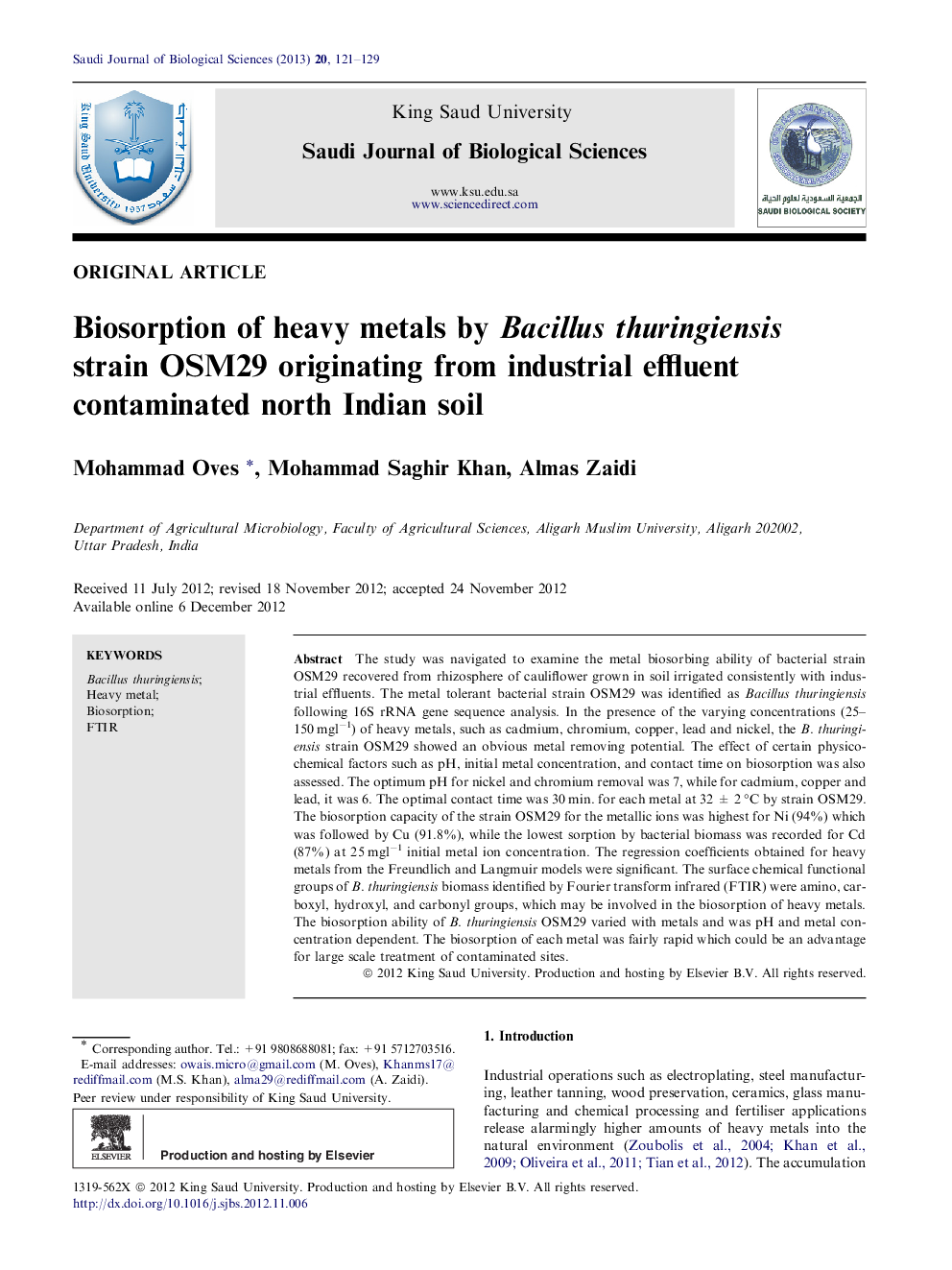| کد مقاله | کد نشریه | سال انتشار | مقاله انگلیسی | نسخه تمام متن |
|---|---|---|---|---|
| 4406497 | 1618690 | 2013 | 9 صفحه PDF | دانلود رایگان |

The study was navigated to examine the metal biosorbing ability of bacterial strain OSM29 recovered from rhizosphere of cauliflower grown in soil irrigated consistently with industrial effluents. The metal tolerant bacterial strain OSM29 was identified as Bacillus thuringiensis following 16S rRNA gene sequence analysis. In the presence of the varying concentrations (25–150 mgl−1) of heavy metals, such as cadmium, chromium, copper, lead and nickel, the B. thuringiensis strain OSM29 showed an obvious metal removing potential. The effect of certain physico-chemical factors such as pH, initial metal concentration, and contact time on biosorption was also assessed. The optimum pH for nickel and chromium removal was 7, while for cadmium, copper and lead, it was 6. The optimal contact time was 30 min. for each metal at 32 ± 2 °C by strain OSM29. The biosorption capacity of the strain OSM29 for the metallic ions was highest for Ni (94%) which was followed by Cu (91.8%), while the lowest sorption by bacterial biomass was recorded for Cd (87%) at 25 mgl−1 initial metal ion concentration. The regression coefficients obtained for heavy metals from the Freundlich and Langmuir models were significant. The surface chemical functional groups of B. thuringiensis biomass identified by Fourier transform infrared (FTIR) were amino, carboxyl, hydroxyl, and carbonyl groups, which may be involved in the biosorption of heavy metals. The biosorption ability of B. thuringiensis OSM29 varied with metals and was pH and metal concentration dependent. The biosorption of each metal was fairly rapid which could be an advantage for large scale treatment of contaminated sites.
Journal: Saudi Journal of Biological Sciences - Volume 20, Issue 2, April 2013, Pages 121–129